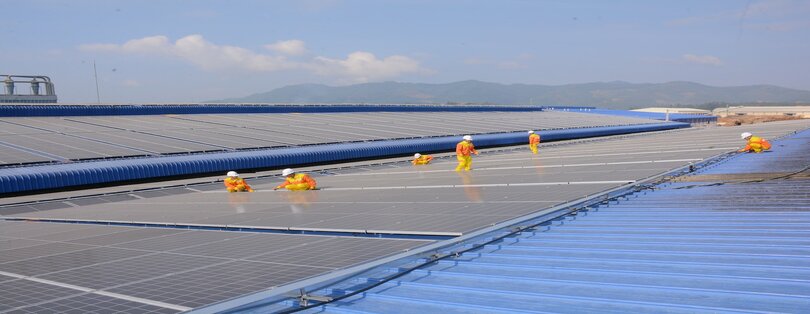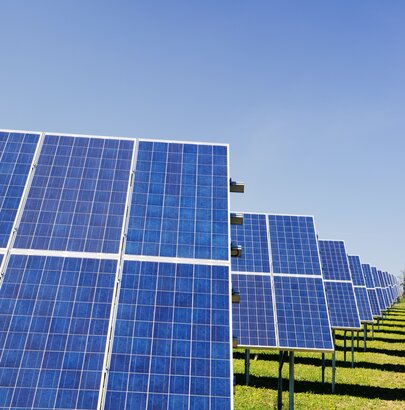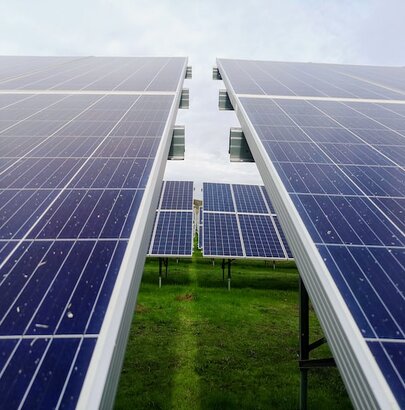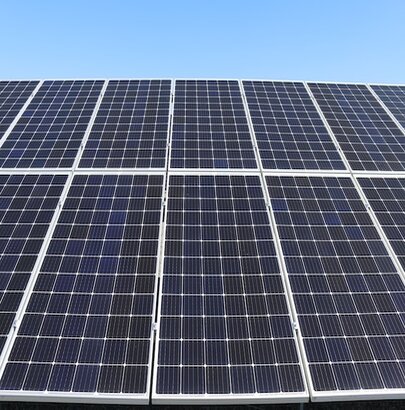-
Jmd Megapolis,Sohna Road,
419-424,Sector 48,Gurgaon - +919625193388
- support@fryble.com


The off-grid solar PV system generally consists of a photovoltaic array composed of solar cell modules, solar charge and discharge controller, battery pack, off-grid inverter, DC load and AC load. The photovoltaic array converts solar energy into electric energy when there is light, and then supplies power to the load through the solar charge and discharge controller while charging the battery pack.
When there is no light, the battery pack supplies power to the DC load through the solar charge and discharge controller. Meanwhile, the battery also supplies power directly to the independent inverter, which inverts into AC power and supplies power to the AC load.
We offer consultation and detailed information before you decide to solar power your house. All details are always out there for you to see along with the fact that there are no hidden charges.
With the progress of society and the rapid development of science and technology, people's demand for energy has gradually increased, especially electric energy. When we talk about electric energy, the most important part is the power generation side and the power transmission side.
Although the construction of power transmission and distribution facilities has been accelerating in recent years, there are still some sparsely populated areas or remote areas and special power-using occasions cannot be fully covered due to the high cost of grid deployment.
How Does a Grid Solar Power System Work?
It may seem complicated but we ensure you that coming in agreement
with FRYBLE are the smartest thing you will do.
Although it may seem complicated, the grid solar power system is
very easy to understand and at the same time it as a ton of
advantages too.In the simplest way
The sparkling shines on the panels of solar nature generates DC electricity.
This electricity which is DC type is then fed into an inverter which works on
solar principles that converts it to 50Hz 240V AC electricity.
For power appliances which are used on residential and commercial setup
utilize this 240V AC electricity.
Extra electricity which is surplus for user is fed back into the main grid.
There are many benefits of the Grid tied solar power systems. On the top they are cost saving and hold importance not only to you but to the planet as well. A few benefits are:
First of all, if you use it for your own house, please make a survey of the total power of electrical appliances in your home (the power and quantity of each electrical appliance) and the daily electricity consumption. After you inform our sales staff, we will provide a suitable system configuration.
If the above two are not clear, we will provide a general system for your reference. If it’s a commercial system, please inform our sales staff of the daily electricity consumption, total loads of power, and voltage. Our engineers will give you a suitable commercial system solution.
We have a perfect after-sales service. If there are any problems during the operation of the system, you can contact our sales staff and provide some pictures and videos. Our engineers will analyze the reasons and provide solutions. If any part of the product is damaged due to a quality problem during the warranty period, we will provide replacement parts for free, if it cannot be repaired, we will provide free replacement of the whole machine.
After confirming the system configuration and order, our sales staff will provide a complete wiring diagram and user manual. Customers only need to have basic electrical knowledge or hire local electricians to complete the system installation.
First of all, please understand whether the power generation capacities of the systems from different manufacturers are the same or not. Under the same condition, the power generation is mainly determined by the size of solar panels and batteries.
Although different manufacturers sometimes have the same nominal power, it may be referred to as the load's power, but the power of the solar panel is indeed different, so careful inquiry and comparison are required before making a decision.

Commercial solar power supply systems are mainly aimed at high-power commercial and industrial electricity applications. Generally, the load power is greater than 30KW, and the daily power consumption is above 100KWH. Basically in any country, commercial electricity and industrial electricity are generally attributed to residential electricity, and electricity bills have long been a huge cost.
The solar power supply system can greatly reduce the use of city electricity by converting free solar resources into electricity, and even completely replace the use of city electricity, which can save a huge amount of electricity bills in one year.

The household solar power supply systems are mainly aimed at home users. With the maturity of solar energy technology and the decline in costs, solar power generation, which was originally only used in commercial and industrial fields, has been slowly extended to the civilian market.
Compared with commercial electricity, household electricity demand is relatively small in terms of power generation and load, and the budget is limited.

If your house has many high-power appliances (such as multiple air conditioners, water pumps, large-capacity refrigerators), and the daily power consumption is large, then the 10-20KW solar power supply systems are prepared for this. This series of products can carry up to 20KW of electrical appliances, and the maximum power generation is 70KWH per day.
Using the newly developed MPPT controller, the conversion efficiency of 99% is almost no waste of electricity from the solar panels.
On-Grid Systems are PV systems that operate with utility (grid) power available - whether for utility, commercial, residential or standalone buildings. The objective of an on-grid system is to partially or entirely fulfill its user's energy requirements, offsetting the energy demand from the utility grid.
When the PV system generates less power than the requirement, utility power automatically complements the solar generation in order to send the required power to the user. On the other hand, with a net metering scheme in place, on-grid systems can send excess power generated back to the grid in exchange for utility credit.
On-grid systems are the simplest and the most cost effective to install. With paybacks from as little as 5 years and a life of 25 years, these systems are both environmentally and economically friendly.
Use clean, renewable solar energy to generate electricity, without consuming non-renewable resources, and no greenhouse gas and pollutant emissions generated.
The generated energy is fed into the grid, and the grid is used as an energy storage device, without the use of batteries, which can reduce the investment by 35%-45% comparing with off-grid solar systems, thus greatly reducing the cost.
In the design, the solar cell modules are perfectly combined with the building, which can not only generate electricity but also be used as building materials and installation materials , so that the material resources can be fully utilized to perform multiple functions.
Distributed construction, decentralized power supply nearby, and flexible integration into and exit from the power grid is not only helpful to enhancing the ability of the power system to resist natural disasters, but also help to improving the load balance of the power system, and reducing the loss of transmission lines.